|
Cruising Southeast Alaska: Klag Bay
When we planned the
offshore run directly from Seattle to Alaska, we'd allowed
ourselves a day or so to recuperate and several days for weather
delays before our
permit
entry date for Glacier Bay. We decided to spend a few days exploring
the outer coast of Chichagof Island if we arrived early. We ended up
not needing any of those buffer days, so had five nights before we
were scheduled to enter Glacier Bay. Our first anchorage was at Klag
Bay, about 65 miles north of Sitka (map
of area). Sheltered anchorage is at the head, and ashore are the
ruins of the abandoned mining town of Chichagof.
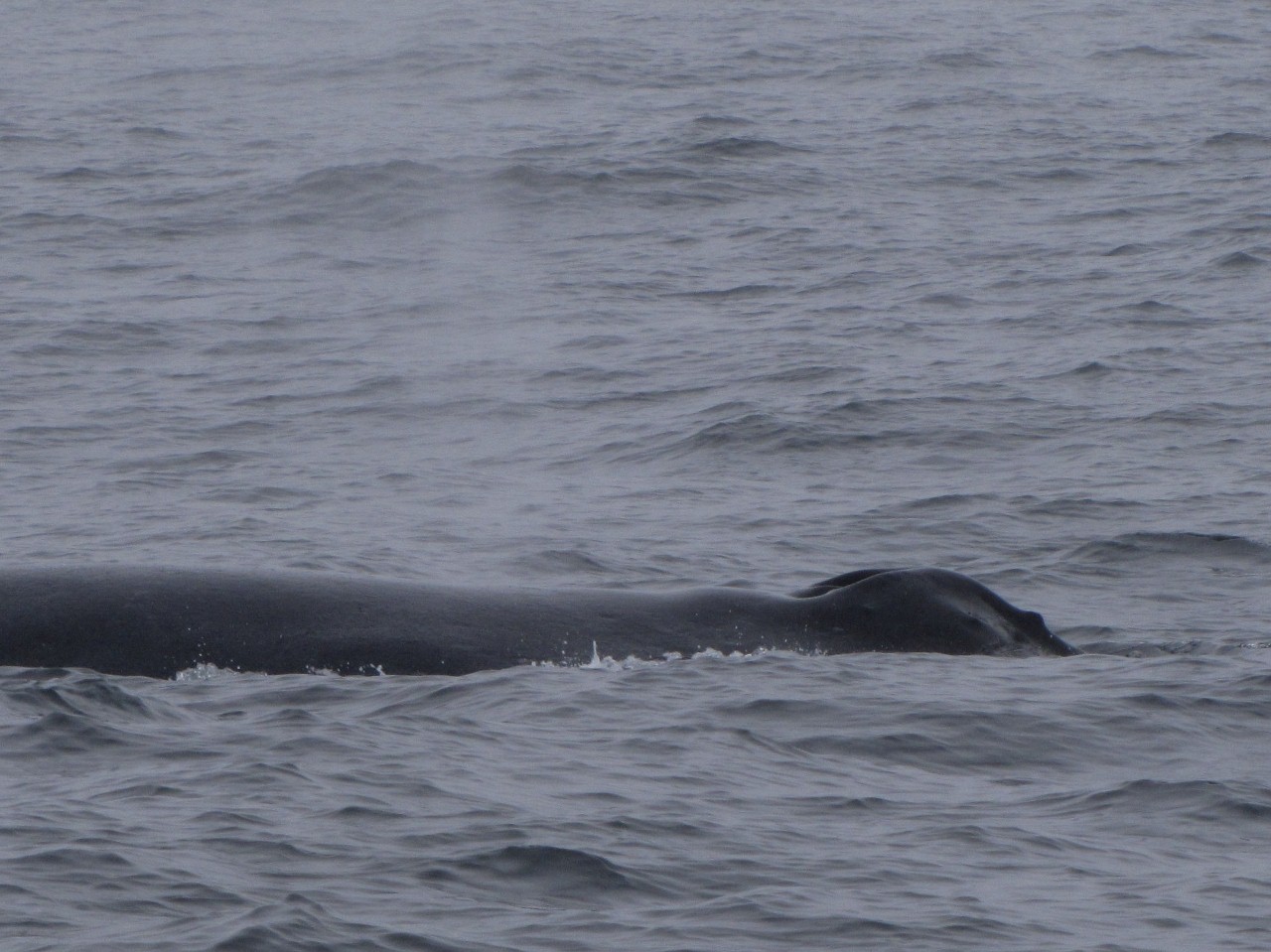%20(1280x959)_small.jpg) |
We'd mostly been
running about 50 miles offshore, but neared land as we turned directly north
towards Klag Bay. The wildlife concentration increased dramatically. Sea
otters were everywhere, as were humpback whales. We'd mostly seen
humpbacks before in singles or pairs, but to see nearly a dozen at once was
exhilarating. The scariest moments of the while trip up trip occurred right
then: a whale lunged, head-up, directly in front of the bow. James threw the
engine in reverse to avoid hitting it. Still rising out of the water, the
whale disappeared from view under our anchor. We didn't collide, but it was
very close. |
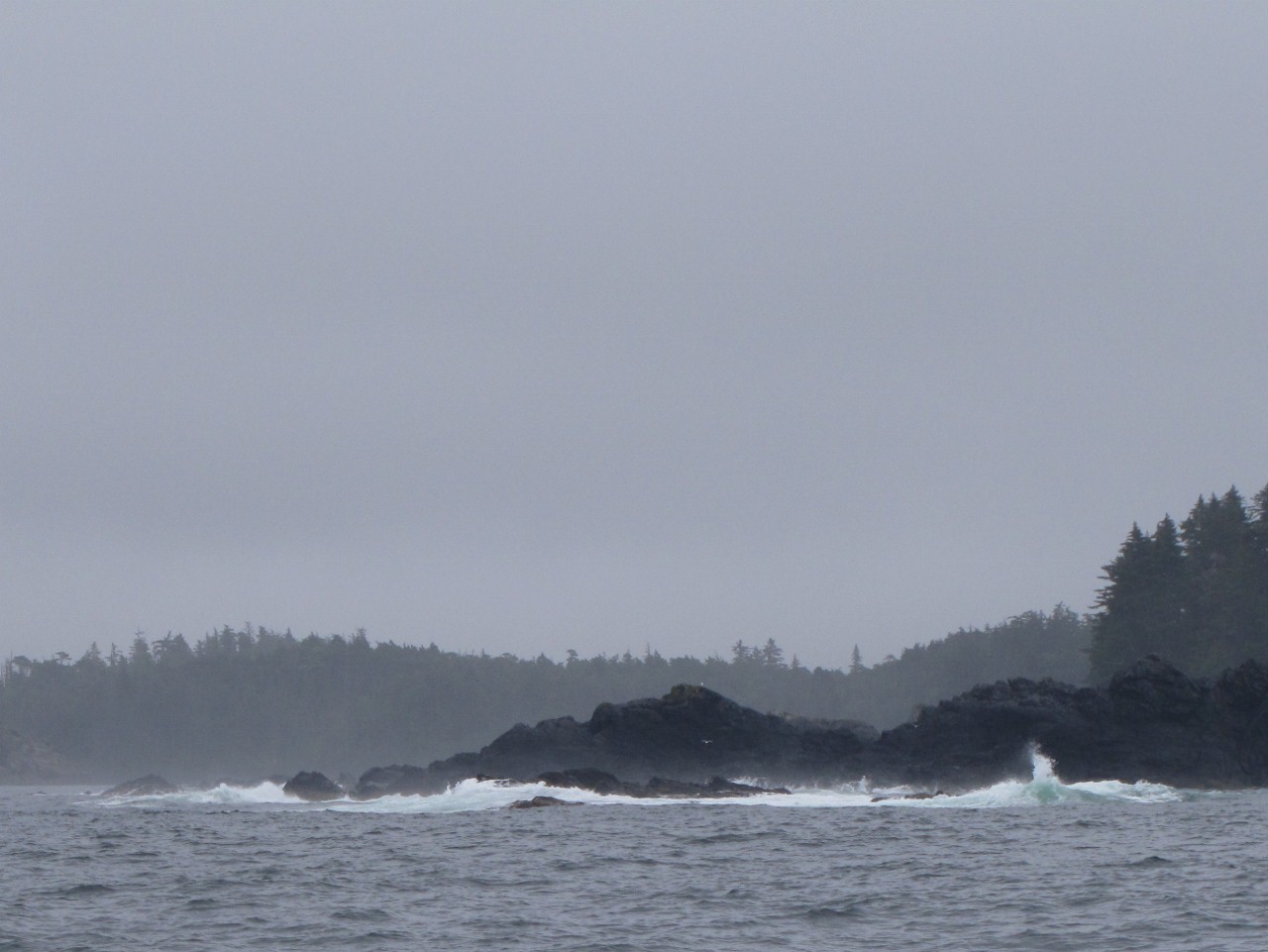_small.jpg) |
The coastline along the west of Baranof Island is rugged and
forbidding. The overcast day made it more so.
|
 |
According to the Coast Pilot
"Klag Bay, at the head of Khaz Bay, is cluttered with islands, and
the shores are foul especially on the E side behind the islands in
the bay. The two entrances to the bay lead through narrow crooked
channels, with foul shores and strong currents, which are difficult
except for small vessels at slack water. Strangers should enter at
low water slack when the dangers will show above water or be
indicated by kelp."
Chart
17322 shows the area, with an inset for the entry to Klag Bay.
|
_small.jpg) |
While the anchorage
wasn't overly difficult to enter, the combination of tidal currents and a
narrow entry channel did require some care. We approached through the
southern entrance to Klag Bay, called The Gate. Day mark "1" is visible on
the left, with the range markers ahead. You might wonder why
we chose this anchorage after our 5-day run, with easier ones nearby. We
wanted an interesting stop after the long run, and we just weren't feeling
that tired. We didn't feel it would make be any different entering Klag Bay that afternoon or three days later.
|
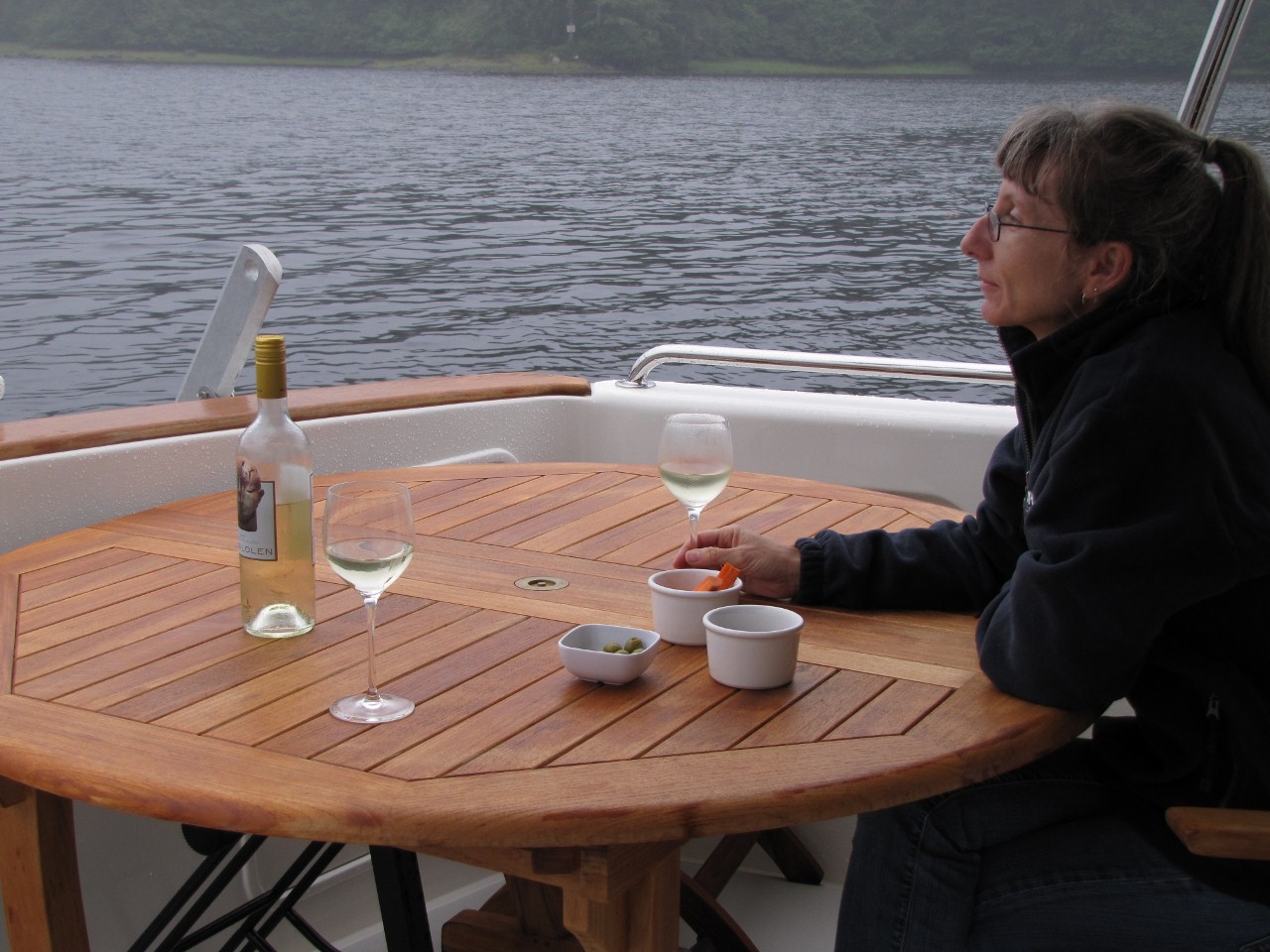_small.jpg) |
We'd had a good run up, but it was nice to drop anchor and relax out
on the back deck. Shutting the engines down after five days of
continuous running
felt a little strange though.
|
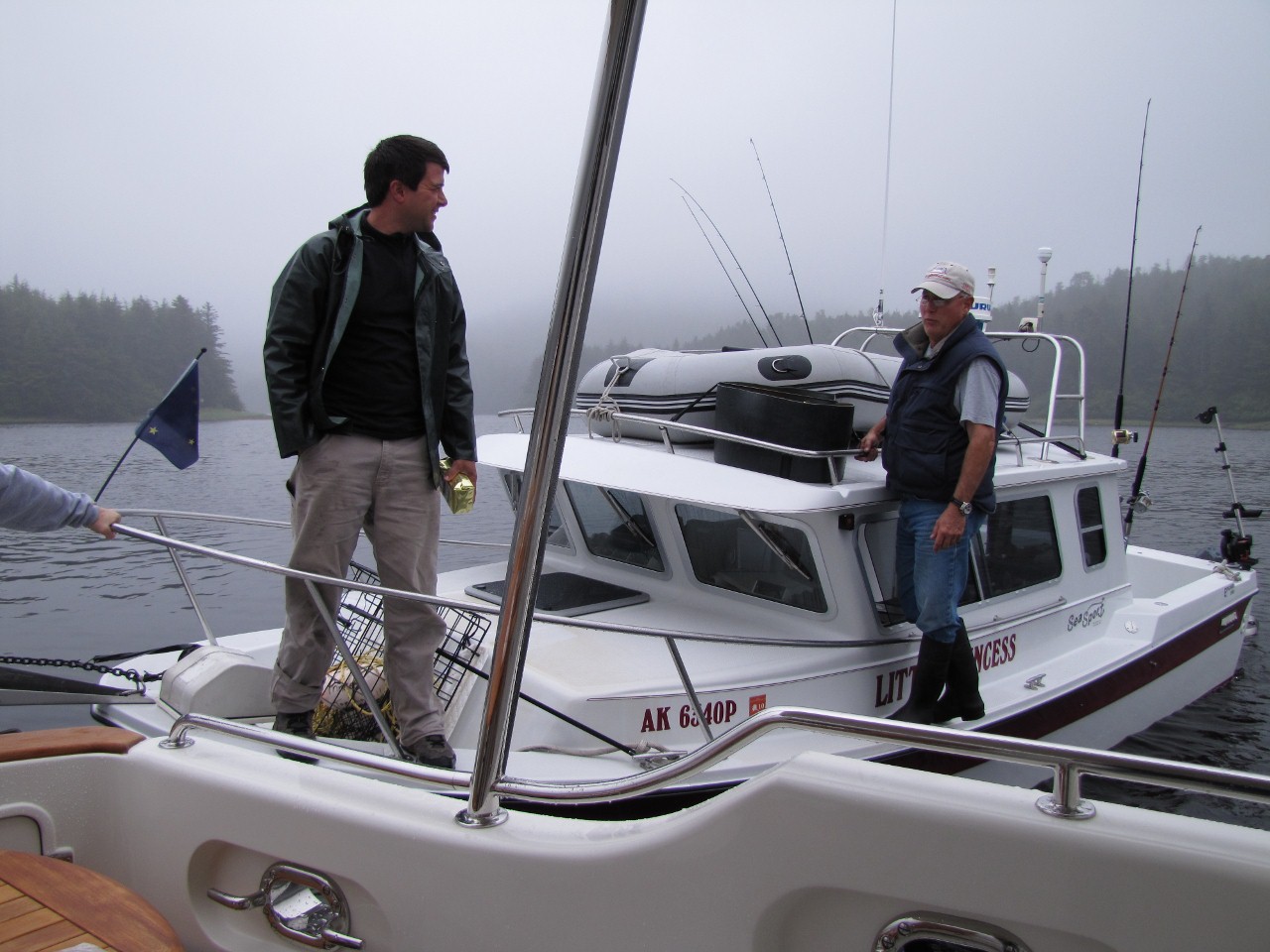_small.jpg) |
Soon after we'd dropped anchor, a well-rigged
SeaSport, Little
Princess, approached. On
board were Tom and his son-in-law Tom. They accidentally had only decaf
coffee aboard and were wondering if they could offer anything in
trade for some real coffee. We answered "fresh fish," and received a big piece of fresh
cod for our dinner. This was a welcome surprise, as we weren't
planning to do any fishing or even catch crab on this trip, mainly
because time was limited. The senior Tom asked if we were fishing.
When we said no, he looked at us both carefully and said, "How
come you donít fish? You look intelligent."
|
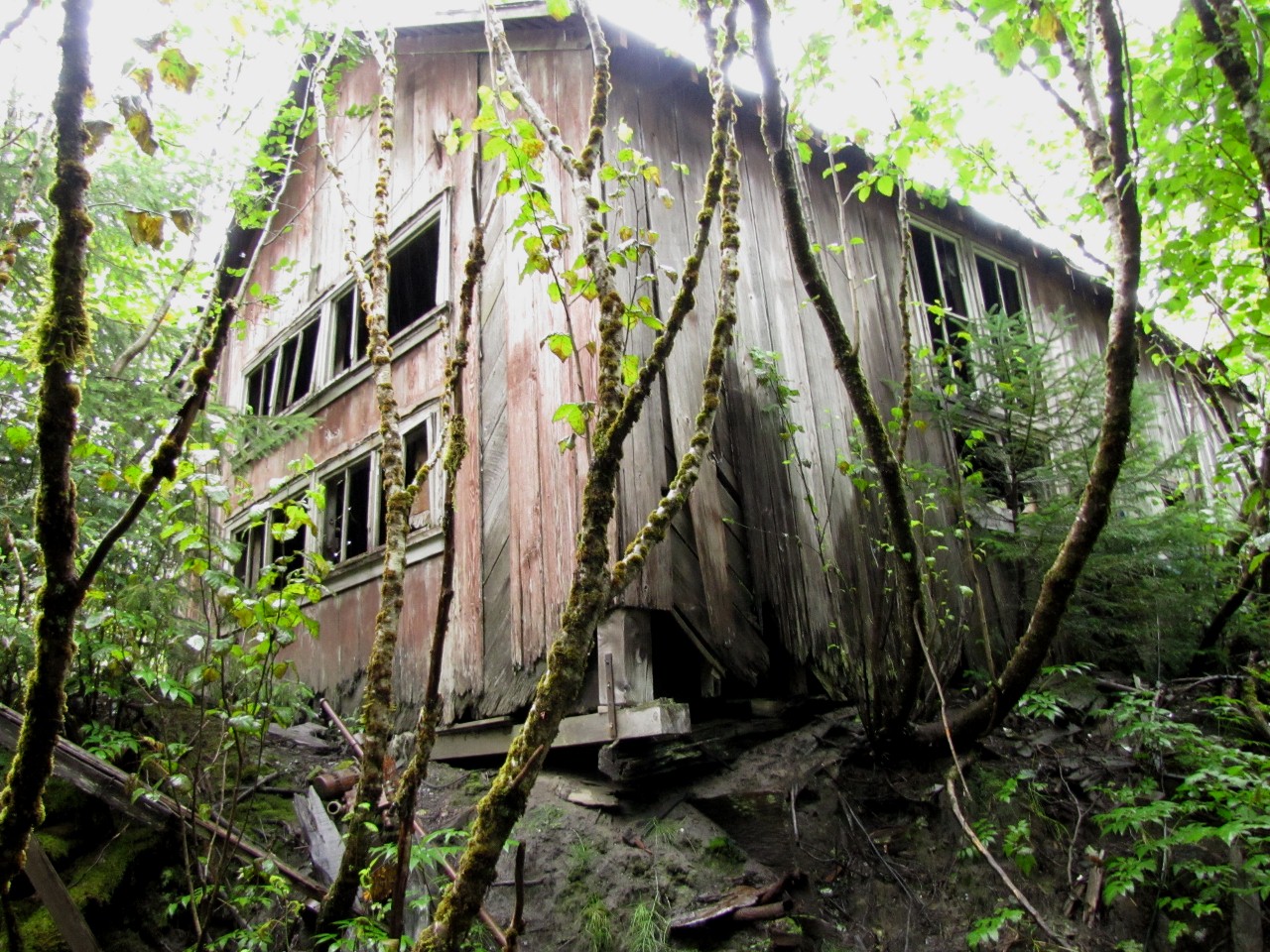_small.jpg) |
We slept soundly that night, and the next
morning went ashore to explore the ruins. When the mine shut down, much of
the buildings and equipment were abandoned in place. Many of the buildings had since fallen down,
but a number were still standing, and equipment was scattered everywhere. |
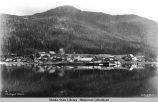 |
The
Alaska Digital Archives has several photographs of the mining town of
Chichagof strung along the shore at Klag Bay and various aspects of the
mining operation. Mining took place between 1905 and 1942, producing
660,000 ounces of gold and 195,000 ounces of silver.
Shafts and passages extend underground 4,800
feet horizontally, 4,300 feet vertically, and 2,750 feet below sea level.1
|
_small.jpg) |
We weren't sure where
the entry to the mine was, but eventually we found it a short distance into
the woods on the south end of the town site, at a large creek. |
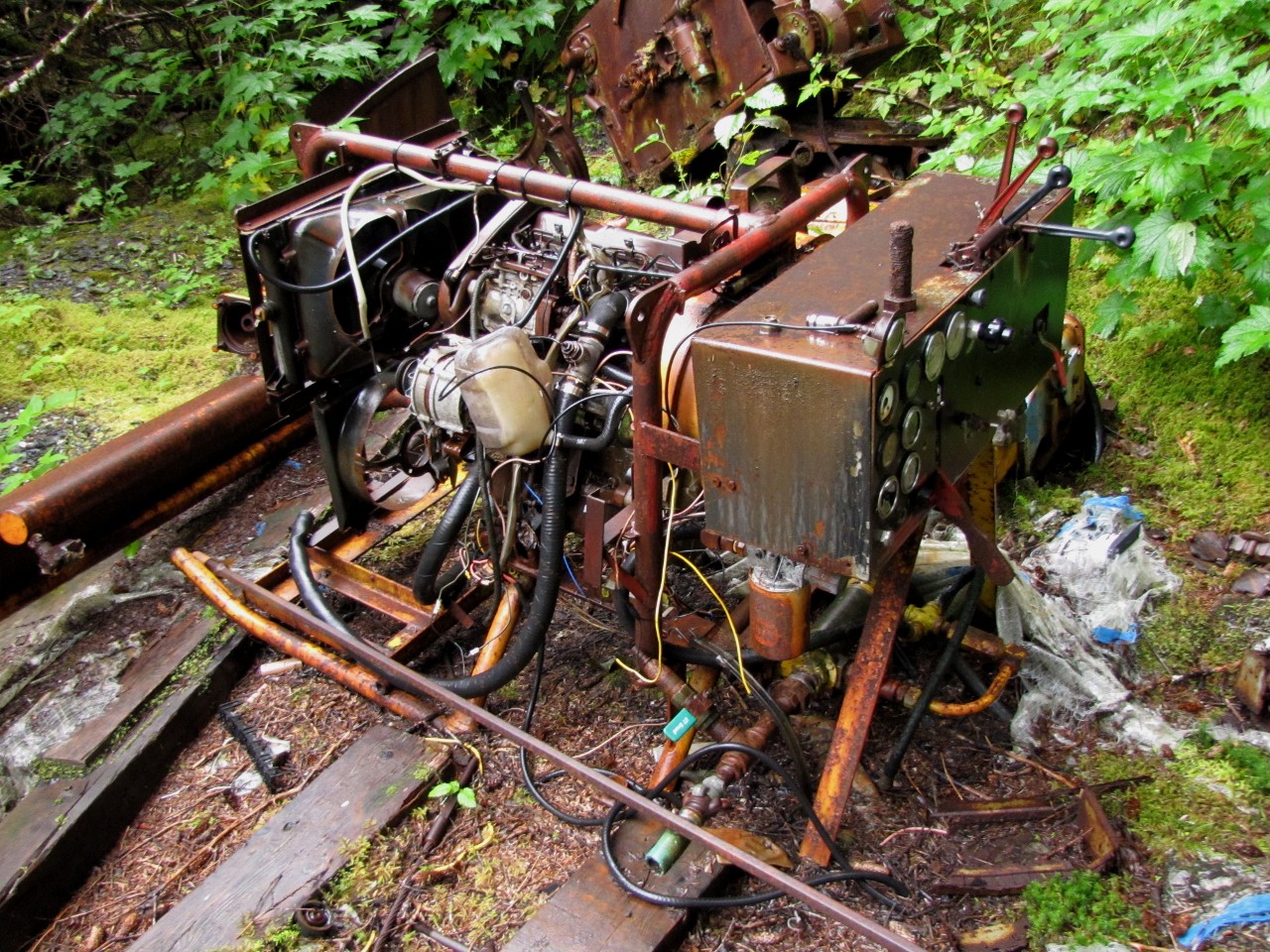_small.jpg) |
In several places we found evidence of activity that dated well after the
1940s, such as this later-model Volkswagen engine. We later learned that in
1981 an operation began to resurrect the mine. The project was abandoned in
1988 after their camp burned down.1 |
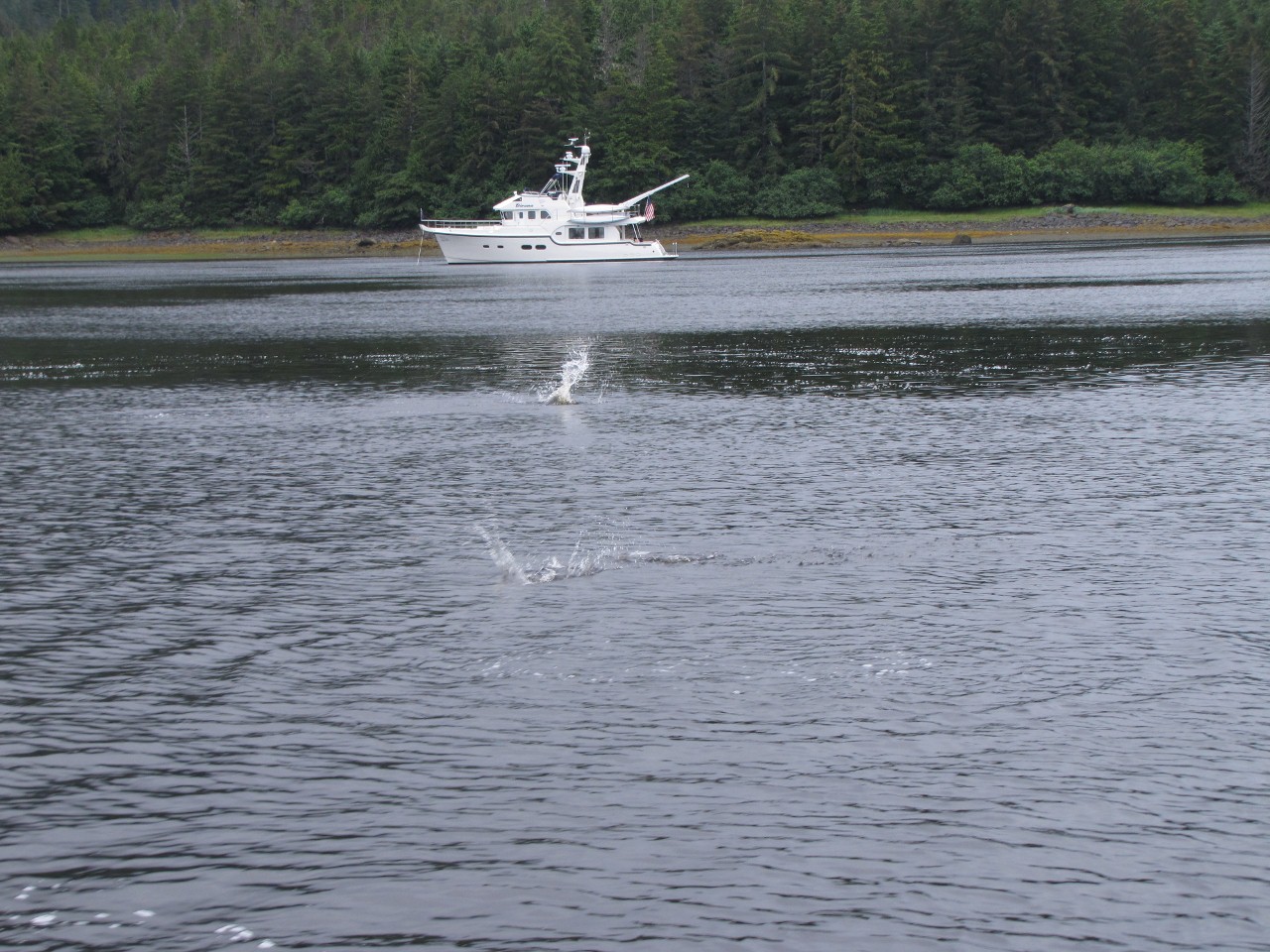_small.jpg) |
We toured Klag Bay a bit before returning to Dirona. Salmon jumped
all over the bay and were so packed together in places that their fins stuck out
above the water--we'd not seen anything like it. Tom and Tom had caught some
that morning and brought us several pounds of freshly
caught and cleaned salmon, no doubt taking pity on the stupid non-fishers.
They also recommended a number of places to visit in southeast Alaska. We
were grateful for the fish and the advice. |
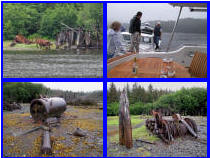 |
Click for more pictures |
[Up]
[Previous]
[Next]
Last updated 2010.10.02 |
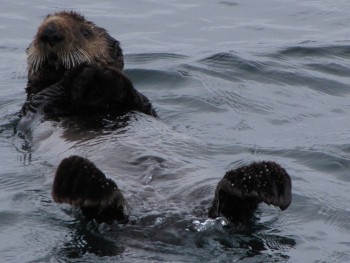
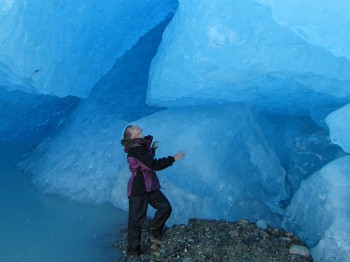
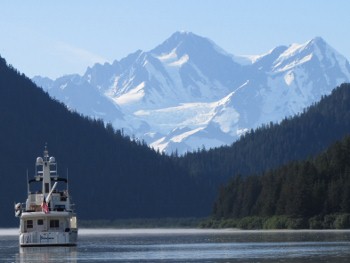
%20(1280x959)_small.jpg)
_small.jpg)
_small.jpg)
_small.jpg)
_small.jpg)
_small.jpg)

_small.jpg)
_small.jpg)
_small.jpg)
